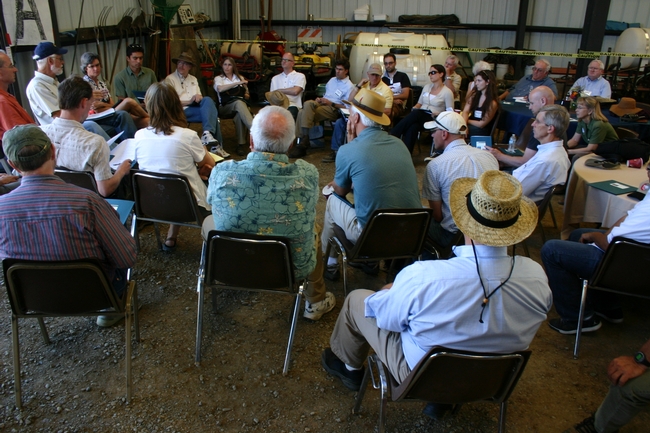Outreach lessons for the information age
As an outreach professional working with the University, I am constantly seeking new ways to engage with the agricultural community, and ways to improve how agricultural knowledge is produced and transmitted. How can solutions to agricultural and sustainability challenges be informed by farmer experience and scientific research together? And how can we best provide specific information when and where it is needed?
In the new publication, “Extension 3.0: Managing Agricultural Knowledge Systems in the Network Age” by Mark Lubell, UC Davis professor of environmental acience and policy, UC Davis ecology alumna Meredith Niles, and Matthew Hoffman of the Lodi Winegrape Commission, I've gleaned some important lessons that can guide my own work and the work of my organization in trying to effectively find solutions to California's agricultural challenges. A few to share include:
- Knowledge is produced and distributed by a network, not an individual. Understanding key linkages in a community or area of research can dramatically shorten the distance between knowledge-seekers and knowledge-holders. Track and understand how farmers and agricultural professionals learn from one another, and understand who they go to for their information and who they trust.
- Boundary-spanning partnerships across different agricultural sectors serve to connect different actors together, building social networks that co-create and distribute knowledge. This practice is common for many. But these partnerships can always grow, and unexpected partners can breathe new life into existing collaborations.
- Online information technologies can be innovative ways to connect and learn, but will never be a substitute for personal and in-person connections. A combination of the two may provide extended platforms for knowledge sharing, and help expand networks.
Lubell's article calls on extension systems and professionals to be “experimental, adaptive, and creative with program design and implementation.” At the UC Sustainable Agriculture Research and Education Program, we are working to integrate some of these principles into our own projects. One effort, the Solution Center for Nutrient Management, will incorporate in-person and online discussions about seasonally-relevant nutrient management topics. Our goals are to create helpful ways for researchers to conduct outreach, improve access to research on nutrient management, and better connect different groups to share their nutrient management knowledge and experience through social networks.
Extension 3.0 offers a strong way to harness all that's developed in the information age and turn it into useful, accessible, and trusted knowledge. Many UC offices are taking up the charge, and we're excited every time a new effort arises.
Learn more from the article, and connect with Mark Lubell, Matthew Hoffman, and Meredith Niles on Twitter.


The newer statewide UCANR California Naturalist Program that I work for is also trying to develop our network and community of practice, understand the key linkages that tie the community together, and create boundary spanning relationships in natural resource education and stewardship. We're very excited about our first in-person statewide meeting in October.
Posted by Brook Gamble on September 24, 2014 at 12:24 PM